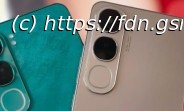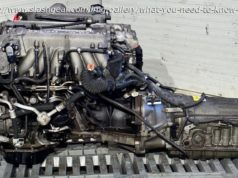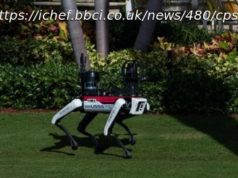The Braava m6 and Roomba s9 work together to vacuum and then mop your floors
It was just late last year that iRobot announced the i7, a top of the line Roomba that could map your home, remember those maps, clean the rooms that you wanted it to, and then dump all of the dirt that it picked up into a docking station so you didn’t need to even think about the robot for weeks, or even months. After testing out the i7, we found that it really did work as advertised. For the first time, you could have consistently cleaner floors with literally zero effort. Thanks, robots!
We thought, somewhat naively as it turns out, that iRobot would be content to take a little bit of a break; historically, the Roomba innovation and commercial release cycle hasn’t been particularly aggressive. The i7 seemed like a big enough step forward that iRobot would let folks adjust to the idea of a self-emptying Roomba, which is (to be fair) a pretty impressive engineering trick.
Instead, iRobot is completely overshadowing the Roomba i7 just nine months later with two new floor cleaning robots: the Braava m6, which is a beefed-up version of the Braava Jet with a mapping system in it; and the Roomba s9, a square-fronted (!) Roomba vacuum with a 3D sensor in the front to help it manage tricky areas of your home better than ever. The reason that both of these robots are being announced together is because they work as a team, communicating with each other to first vacuum your floors, and then mop them.
Until today, I never thought I’d see a square-fronted Roomba, but here we are. We’re told that the Roomba s9 is basically “a ground-up redesign” of the Roomba. And while there are a lot of features that trace their heritage to earlier Roomba generations, iRobot didn’t leave all that much untouched. You still get a little bit of that older Roomba look with the very prominent round design on top (which is also a light ring for notifications and provides top access to the dust bin), but otherwise, square-ish is the new round.
For years, Neato has made the point that in order to get deep into corners and up along all the flat surfaces that can be found in most homes, a square front makes the most sense. Roombas have had the advantage in maneuverability (since a round design allows for zero-radius turns), but it looks like iRobot has decided that the square front really does clean better.
Having a square front gives the Roomba s9 a few different advantages. First, it means that the cleaning system (the brushes and vacuum) are 30% wider than they could be otherwise, and they get closer to the edges of the robot. Second, and far more excitingly, the square front gives iRobot the space it needs to install a 3D time-of-flight sensor. The press release describes this as “a new advanced 3D sensor [that] constantly scans what’s immediately ahead of the Roomba s9+ at a rate of 25 times per second to help the robot get deep into corners, along edges and clean large areas efficiently.”
Despite repeated pestering, iRobot wouldn’t tell us exactly what the 3D sensor is. What we do know is that it provides x, y, and z coordinates of obstacles, and is robust to the kinds of black or reflective surfaces that have historically tripped up iRobot’s front proximity sensors. (If your Roomba has repeatedly smashed itself into pieces of black furniture, you know exactly what I’m talking about.) iRobot says that the sensor helps “make the process of touching stuff more elegant.” The robot will still nudge things to tell exactly how close it is to obstacles, but it should do so much more gently. The sensor will also help the robot get into tighter spaces, navigate cleanly through those spaces, and then get out again, despite its square shape. And we’re also told that over-the-air updates will add more capability via this sensor in the future.
The front sensor also helps the Roomba s9 make more accurate maps, although the primary mapping system is still the same upward facing vSLAM camera that you’ll find on the i7. It’s exactly the same, in fact, and the Braava m6 uses it as well.
The Braava traces its lineage back to Mint, a little Swiffer-ish robot developed by Evolution Robotics nearly a decade ago; I reviewed one back in 2010. iRobot acquired Evolution Robotics in 2012, and adopted the idea of using disposable or reusable cleaning pads rather than the time consuming and often rather messy wet floor cleaning system of iRobot’s own Scooba. The Braava Jet (announced in 2016) was a compromise, using both sprayed water and cleaning pads, and the m6 is essentially the same—except bigger, easier to use, and able to map its environment just like the Roomba i7 and s9.






